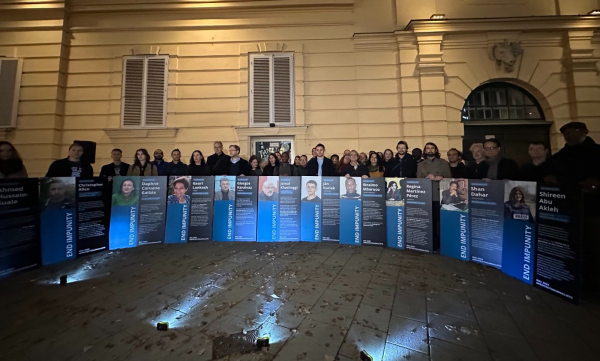Media activists in Syria have often been vilified for manipulating the news coverage in their YouTube broadcasts. While I agree that these cameramen cannot be seen as quality journalists in the traditional sense of the word, we should not forget the important role they play in keeping the international world focused on their country. Today, World Press Freedom Day, we should recognize their efforts.
Before the uprising, only about 20 percent of Syrian households had Internet connections and the government determined what pages even they could view. More than 160 sites – including those linked to opposition parties, independent media and human rights groups – were blocked. Roughly 59 percent of the adult population has mobile phones and broadband connections are available in most large cities. Still, Syriatel, the state mobile operator, is believed to use the service to listen in on conversations and track the movements of its users.
Add this to the dusty picture of the controlled media landscape: in 1982, the forces of then-President Hafez al-Assad killed an estimated 10,000 people in Hama, thereby destroying a Sunni rebellion without a singe photo of a corpse.
It makes sense, then, that Syrians 30 years later are compelled to document the sins of Hafez’s son Bashar, even if he has expelled the foreign press and silenced independent Syrian journalists via detention, torture and sometimes murder. They want the world to know what happens inside their country.
The Internet was not readily available to households in 1982 anywhere in the world. And, 30 years ago there were no all-news broadcasting stations accessible via satellite. One factor many forget is that for all the censorship exerted by Assad and other Arab dictators, people could still obtain a variety of news and opinion via their satellite dishes. Although no reliable figures exist, it is widely believed that probably two-thirds of the households in Syria have satellite connections.
As of the end of March, some 1000 media activists have sent out an estimated 150,000 YouTube videos. Using flip videos and mobile camera phones smuggled across the border and crafting makeshift tripods, these young men – they are primarily young and men – dodge sniper bullets and defy the shelling to document the work of Hafez’s son.
Do not be fooled into thinking they are journalists. They are not. They do not put the stories into context. They are not independent from their sources – they very much depend on the rebels for information and protection. They are passionate, but they are not fair to the evidence.
Because they are the only ones on the ground, they get to set the agenda about what the world sees. We are not party to the actions of opposition forces or the results of their violence, although human rights groups have documented abuses from both sides of this conflict. We also do not hear from women, or from minority Kurds, Druids, Christians or even the Alawites who may or may not support Assad.
What we do see is the uprising as experienced by media activists.
The videos have followed a predictable pattern common in war reporting throughout the ages. First, we saw the crisis in the protests in Da’ara and other cities; then the government was demonized. Next we saw a determined offensive against Assad as an individual. Finally, we have been presented the atrocities: the worst of the worst.
Daily footage subjects viewers to teenagers with their jaws blown off, four-year-olds with bloodied heads and toddlers with shrapnel wounds. They also have been caught enhancing their footage through means like intentionally burning tires. It is done for a purpose. The cameramen upload the disturbing footage to manipulate viewers’ emotions and to persuade us to support their cause.
They do it so that the world will not be ignorant as it might have been back in 1982.
By providing the video footage, Syrian activities are exposing brutal actions Assad wants desperately to hide. They want their footage to be shown on Al-Jazeera, BBC and CNN – the news channels they relied on for news via their satellite dishes. And they are happy to assist any other journalist in an effort to get publicity for their cause. Although the media activists often have little to eat, few hours of sleep and have to film the dead bodies of friends and relatives, they remain friendly and polite to the foreigner who Skype them. Do not forget that they risk their lives to ensure their message gets out. Rather than thinking about them as journalists, consider them the public relations team for the Free Syrian Army.
Do not forget on World Press Freedom Day that most of the estimated 15 “journalists” killed so far in Syria have been media activists and bloggers – many of them targeted by the Syrian government who want to silence them.
Much has been written playing down the role of communication technologies in the Arab uprisings. Obviously, many factors, including government repression and economic woes, came into play. While it perhaps was not significant in getting people to the rally, social media – along with satellites – has played a very important role in rallying the world’s attention.
Unlike 1982 in Hama, this time around social media and satellites help Syrian activists to control their destinies. The media activist’s persistent documentation ensures that the world cannot pretend they didn’t know.
***********************************************************
Alison Langley is a freelance journalist living in Vienna who teaches Global Journalism and News Reporting at Webster University.
The views expressed in this piece are those of the author and do not necessarily reflect those of IPI.


